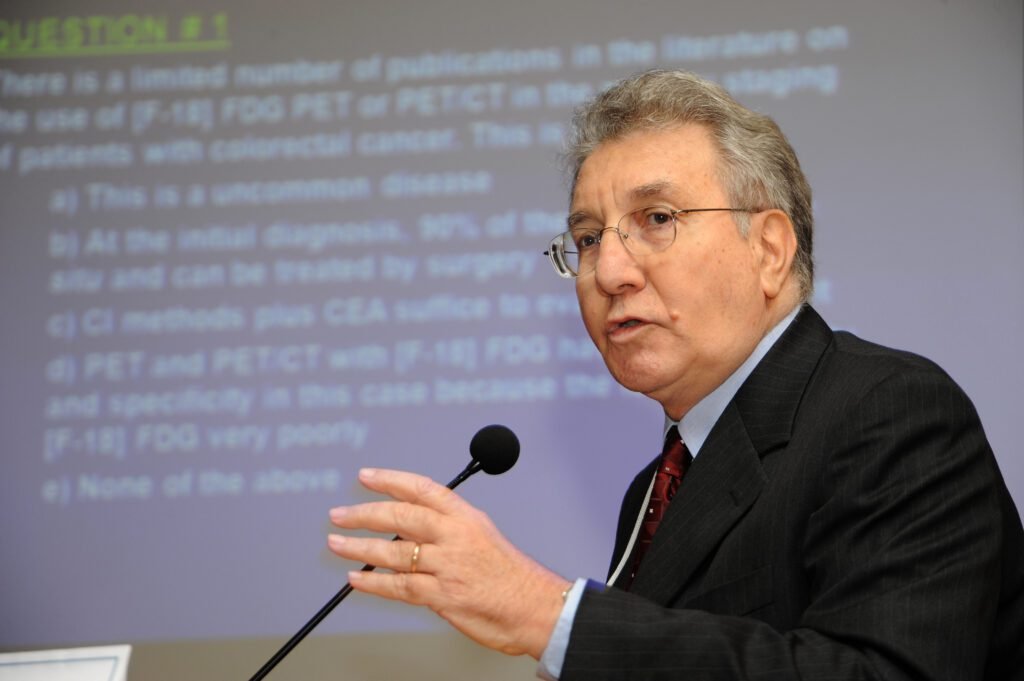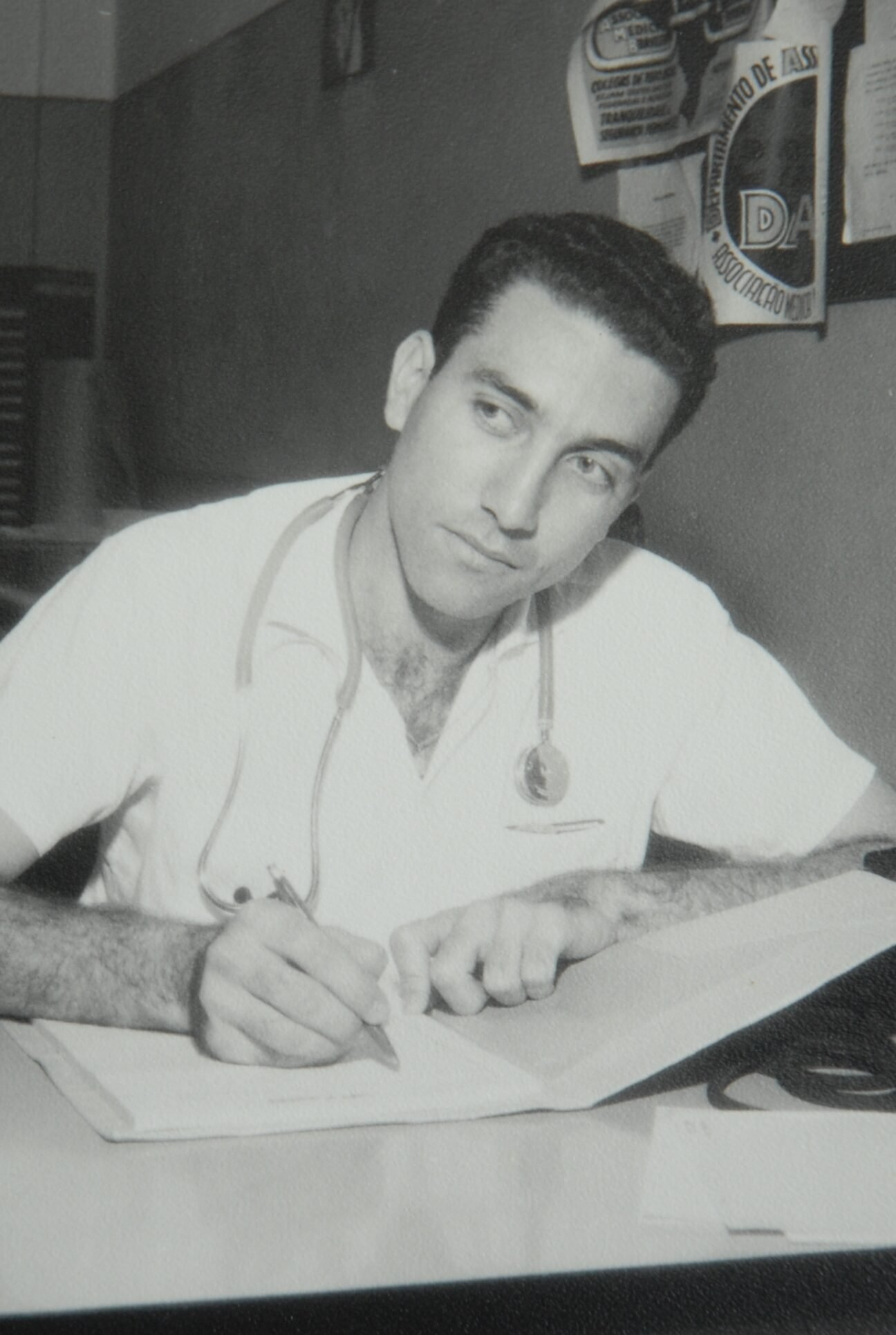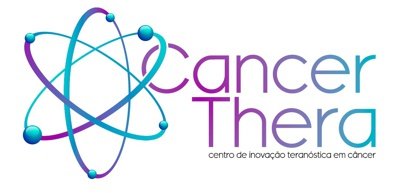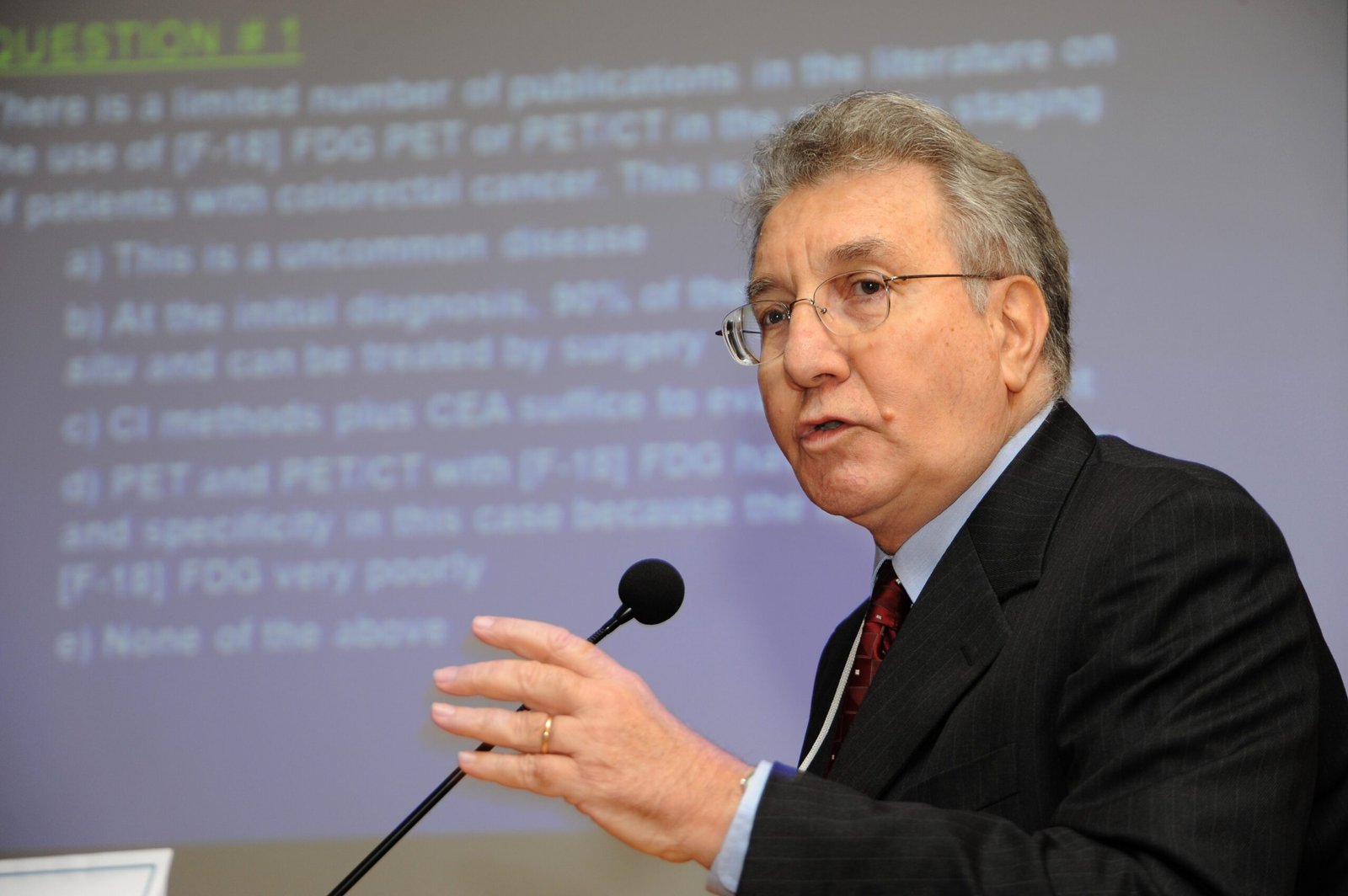Prof. Dr. Edwaldo Eduardo Camargo, born on May 28, 1938, in Guaxupé (MG), was a pioneering scientist in Nuclear Medicine research. His career was marked by significant innovations and a deep commitment to education, making him a leader in the fight against diseases such as leprosy. Among his remarkable achievements, he also served as a leader of major educational and research institutions and professional organizations both nationally and internationally. Furthermore, he is recognized for being one of the first to transmit diagnostic imaging between different cities in Brazil.
In 2024, on April 19 and 20, the first edition of the CancerThera Congress will take place alongside the Edwaldo Camargo Symposium, a scientific event that, for 17 years, has gathered researchers to discuss the latest findings in key health-related fields such as Nuclear Medicine, Preclinical and Clinical Oncology, Medical Physics, Radiochemistry, and Preclinical and Clinical Radiopharmacy, all inspired by the scientist’s innovative spirit.
Learn more about the biography of this Brazilian scientist who has influenced generations of doctors and researchers worldwide.

to scientific research and education, who influenced generations of professionals.
A distinguished career in Medicine and scientific research
After graduating in Medicine from the University of São Paulo (USP) in 1964, he completed his residency in Internal Medicine in 1966 at the same institution.
In 1968, Camargo introduced an innovative radiometric method using the carbon-14 radioisotope for the rapid detection of Mycobacterium leprae, the causative agent of leprosy. At that time, in the 1960s and 1970s, leprosy was diagnosed only through clinical symptoms, often leading to merely palliative treatments. The technique, known as BACTEC, played a crucial role in reducing leprosy prevalence by 98% within just 15 years, expanding access to precise diagnoses in Brazil.
In 1969, he defended his thesis on changes in renal scintigraphy with furosemide. Camargo was the first to publish on the use of furosemide for this purpose, presenting his findings in Chile at the Congress of the Latin American Association of Societies of Biology and Nuclear Medicine (ALASBIMN) a year earlier. His research paved the way for diagnostic advances and more effective treatments, solidifying him as a key figure in Nuclear Medicine.
Due to the lack of Nuclear Medicine residency programs in Brazil at the time, he continued his studies in the field in 1973 as a fellow at Johns Hopkins University (USA), under the mentorship of Prof. Dr. Henry Wagner. There, he developed groundbreaking techniques and contributed substantially to the advancement of Nuclear Cardiology and the preparation and distribution of radioisotopes.
In 1974, Camargo and Prof. Dr. Steven Larson were awarded third place for their study on detecting the metabolic activity of Mycobacterium leprae, presented at the 1st World Congress of Nuclear Medicine in Tokyo, Japan. Three years later, he became an assistant professor in the Division of Nuclear Medicine at Johns Hopkins University, further strengthening his reputation in the scientific community.
Camargo’s work extended beyond these achievements. In collaboration with Larson and Wagner, he expanded the application of BACTEC for detecting Mycobacterium tuberculosis and assessing antibiotics. Today, this methodology is globally used for diagnosing various bacterial infections. These and other contributions, including advances in renal scintigraphy, highlighted Camargo’s ability to develop more effective diagnostic and treatment approaches, benefiting patients worldwide.

“Modifications of the renographic tracing produced by furosemide” (USP, 1971).
Internationally recognized leadership and teaching
In 1982, he returned to Brazil to lead the Nuclear Medicine Division at USP and the Heart Institute (InCor), ushering in a new era of innovations and significant advances in Nuclear Cardiology. Faced with difficulties in accessing radioisotopes in Brazil, he developed methods for preparing and distributing isotopes such as thallium-201 and gallium-67 nationwide.
Between 1988 and 1991, he returned to Johns Hopkins University, further expanding his expertise and contributions by serving as a full professor of Radiology and Clinical Director of the Nuclear Medicine Division. He later returned to Brazil to head the Radiology Department at the State University of Campinas (Unicamp), a position he held until his retirement.
At Unicamp, he introduced advanced technologies such as SPECT cameras and established the country’s second Nuclear Medicine residency program. He also pioneered innovations like transmitting medical images between different cities and states. In 1993, during the 15th Brazilian Nuclear Medicine Meeting, Unicamp’s Nuclear Medicine Service conducted the first-ever nuclear medicine image transmission in Brazil, from Campinas (SP) to Belo Horizonte (MG), and acquired the first image using the radiopharmaceutical 18F-FDG (fluorodeoxyglucose) in the country.
Camargo’s leadership was further recognized through his presidency of key Nuclear Medicine societies in Brazil and Latin America, including the Brazilian Society of Nuclear Medicine (SBMN, 1992–1996) and ALASBIMN (1996–1997). These roles allowed him to advance his field and establish strategic international collaborations.
In 2002, he took charge of the Nuclear Medicine Department at Hospital Sírio-Libanês, where he was responsible for installing the first PET/CT scanner in South America, a major technological milestone for the region.
Beyond his technical contributions, Camargo was a passionate educator, training generations of specialists in the residency programs he established. His dedication to teaching and ability to inspire his students were fundamental parts of his legacy. He was an exceptional mentor, passing on the teachings of his mentor, Henry Wagner, to his students.
“Each person who builds a little around themselves builds a lot for a group. Professor Edwaldo must be very proud of the service he established. It was worth leaving Johns Hopkins and coming to Unicamp. The future is made now, and you are part of this history,” said Maria Luiza Moretti, Unicamp’s general coordinator, in a tribute to the researcher in 2023 during the ceremony celebrating the 30th anniversary of the institution’s Nuclear Medicine Service, part of the program of the 16th Edwaldo Camargo Symposium.
Camargo’s vision and leadership not only advanced Nuclear Medicine in Brazil and Latin America but also set international standards of excellence. The depth of his academic contribution is evident in his numerous publications and awards: over 35 book chapters and 380 published articles, in addition to winning 15 research awards.
Camargo passed away on March 4, 2016, at the age of 78, in São Paulo, leaving behind a legacy of innovation and education. His influence extended beyond Nuclear Medicine, inspiring not only medical professionals but also anyone who had the opportunity to learn about his remarkable work.

With information from: ALASBIMN, SBMN, Springer, Unicamp, and testimonials from family members.
Photos: family archive.





